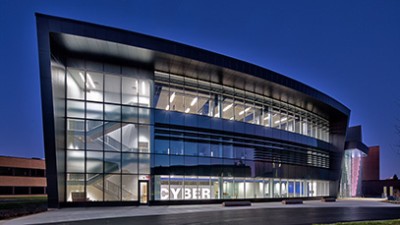
Billy Brumley
Professor
Billy Brumley
Professor
Education
Sc.D., Aalto University
Bio
A native Texan, Bill Brumley received his doctorate from Aalto University (Helsinki, Finland) in 2012. He is a former Staff Engineer for Qualcomm's Product Security Initiative (QPSI) in San Diego, California. He is a 2018 European Research Council (ERC) Starting Grant Laureate. Before joining RIT, he spent a decade as a Professor at Tampere University (Finland). He specializes in system security, cryptography engineering, and side-channel analysis.
Currently Teaching
In the News
-
September 18, 2024
![Matthew Wright, left, and Billy Brumley stand in a brightly lit room in black suits with orange and gold medals hanging from their neck.]()
Two faculty members installed as Kevin O’Sullivan Endowed Professors in Cybersecurity
Billy Brumley and Matthew Wright were appointed for their work in building RIT’s cybersecurity education and research legacy. As one of the highest honors in academia, endowed professorships recognize and support outstanding researchers and educators who profoundly impact the lives of their students.
-
April 5, 2024
![the webpage for the ahmia search engine is shown with a description of how it operate as a serch for hidden services on the TOR network.]()
New study investigates illegal child sexual abuse material and anonymity on Tor network
With the help of multidisciplinary researchers from around the globe, Billy Brumley is investigating the availability of child sexual abuse material (CSAM) in order to better understand and combat its widespread dissemination.
-
November 17, 2023
![graphic with portrait of Billy Brumley, the Kevin O Sullivan endowed professor in cybersecurity.]()
Billy Brumley named new Endowed Professor in Cybersecurity
Billy Brumley has been named the Kevin O’Sullivan Endowed Professor in Cybersecurity at RIT. As part of RIT’s ESL Global Cybersecurity Institute and Golisano College of Computing and Information Sciences, Brumley will contribute to the university’s growing cybersecurity research profile and lead expertise in side-channel attack analysis.








